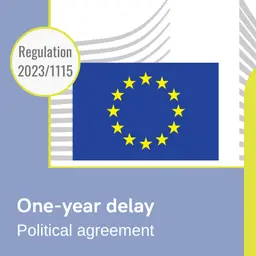
On 30 and 31 January, the meeting to launch the European Horizon 2020 Terminus project (Grant Agreement 814400) was held at Sigma Clermont’s premises. The engineers school from Clermont (Franbce) is the coordinator of this project, which aims to revolutionize the recycling and reuse of multilayer plastic packaging used in the agri-food and cosmetic sectors. It is directly in line with the European Commission’s new strategy to protect the environment from pollution by plastic waste.
Sigma Clermont’s press release
According to the European Commission “Europeans produce 25 million tonnes of plastic waste each year, of which only less than 30% is collected for recycling.”
These same plastics alone account for 85% of the waste found on beaches. To respond to this environmental emergency, the European Commission adopted on 16 January 2018 its first ever European strategy to protect the environment from pollution by plastics with the ambitious objective of achieving 100% recyclable plastic waste by 2030.
The agricultural, agri-food and cosmetic sectors are particularly concerned. Indeed, in order to protect perishable foodstuffs against micro-organisms, humidity, oxygen or even light, these actors use non-recyclable multi-layer plastic packaging that is incinerated or landfilled when it is at the end of its life.
The Terminus project, coordinated by Sigma Clermont, aims to design within four years a new generation of so-called intelligent plastics and packaging that will have an “autonomous” layer separation function allowing them to be recycled.
The main innovation of the project is to include enzymes, proteins produced by living cells, in adhesives and interphases between the different layers composing the packaging material.
They can thus be placed in “yellow garbages” and processed in a special way at the sorting centre. Enzyme degradation will be triggered by ultraviolet rays in an aqueous solution.
The objective: to allow the separation of the different layers of the packaging and thus their reuse.
A project at the frontiers of chemistry and mechanics
The Terminus project aims to meet the three objectives set by the European Commission in the context of the transition to a more circular economy:
• Ensure that all plastic packaging placed on the market in the European Union is recyclable by 2030
• Reduce the consumption of single-use plastics
• Limit the spread of microplastics
Following a highly praised evaluation report on its innovative nature, the Terminus project was subsidised by the European Commission to the tune of €5,737,013, of which €849,782 was allocated directly to Sigma Clermont. This funding will allow the School to carry out scientific tasks related to the expertise of its teacher-researchers and to coordinate two work packages.
That is:
• The management of the project as a whole
• The design of a prototype machine to separate the packaging layers
To do this, Sigma Clermont partners with renowned institutions in eight European countries such as the Norner AS Research Institute based in Norway, the Italian biotechnology company BioPox, the German company Covestro, the Swedish packaging giant Tetra Pack, the leading engineering school FHNW based in Switzerland and Belgian, Swedish and Lithuanian institutions.
Terminus is in line with the academic and scientific positioning of the Clermont-Ferrand engineering school: the convergence and complementarity of expertise.
Chemistry on the one hand, with collaborative research work on enzymes and mechanics on the other hand, to design and develop a prototype machine for separating plastic layers.













